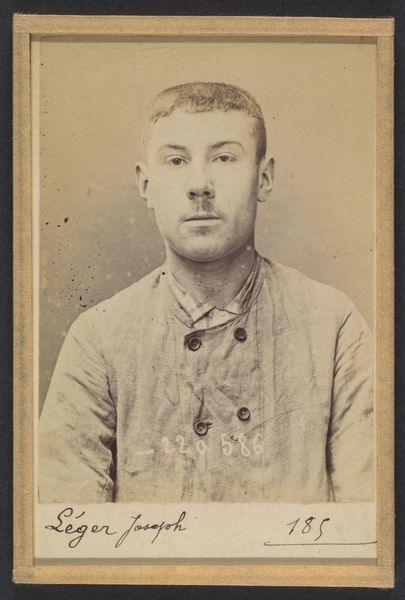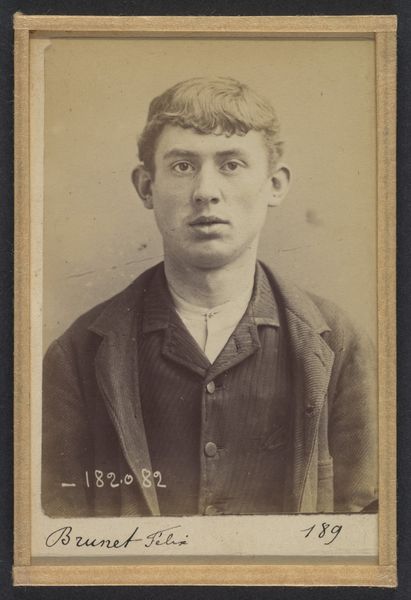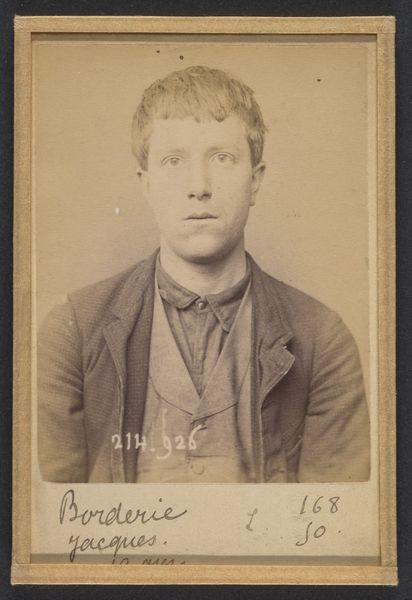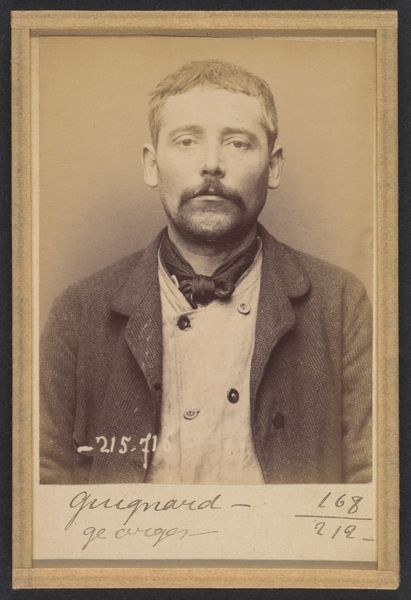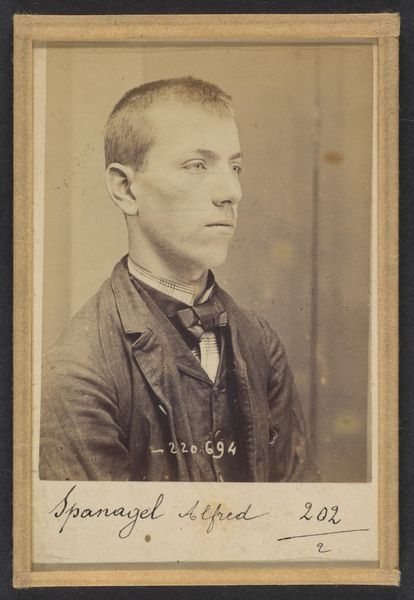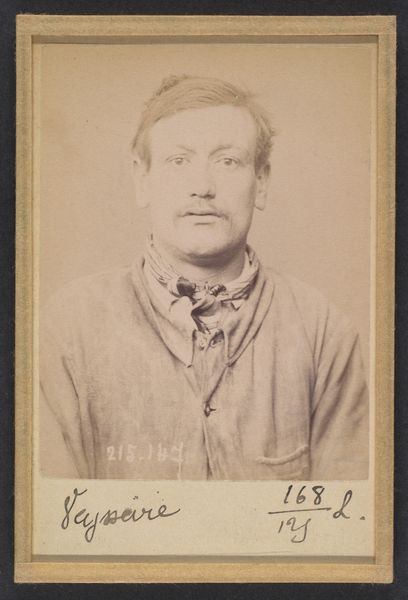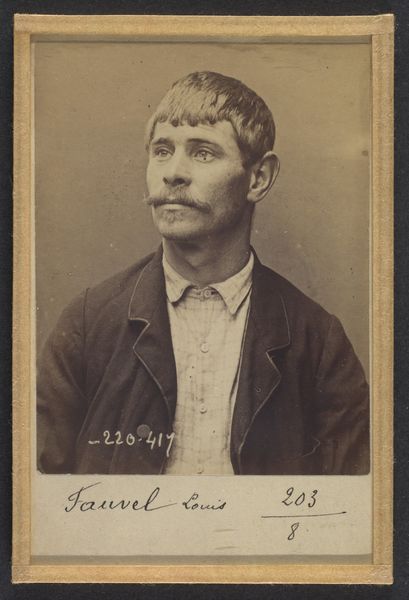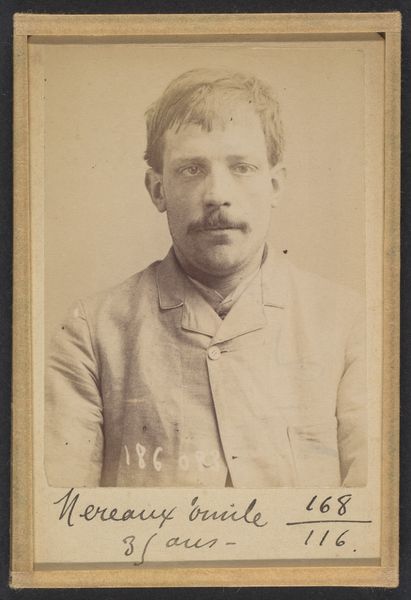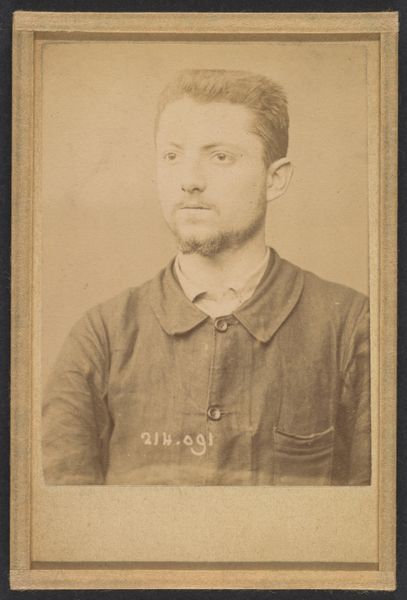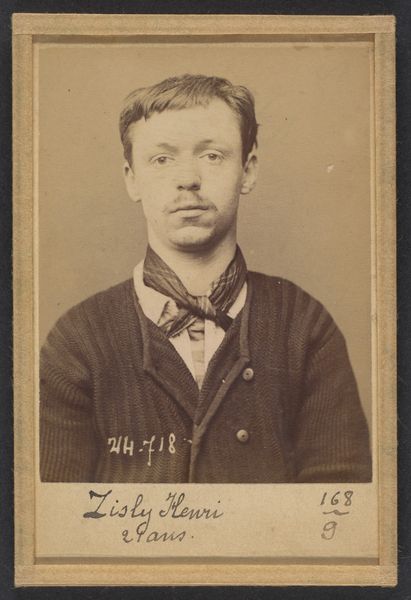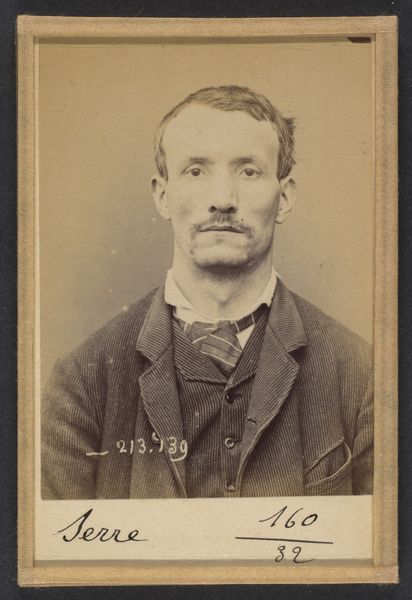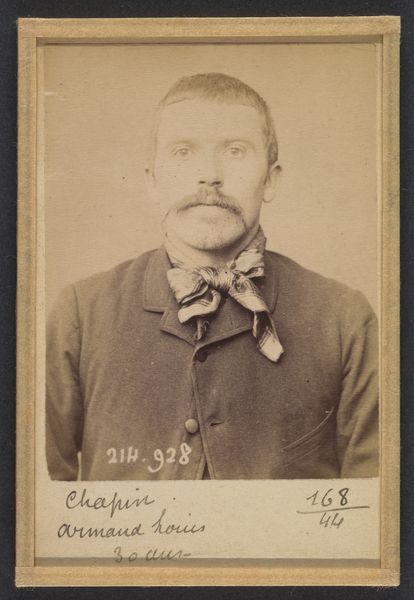
Carteau. Auguste. 23 ans, né à St-Florent (Cher). Verrier. Anarchiste. 1/5/92. 1892
0:00
0:00
photography, gelatin-silver-print
#
portrait
#
portrait
#
photography
#
gelatin-silver-print
#
realism
Dimensions: 10.5 x 7 x 0.5 cm (4 1/8 x 2 3/4 x 3/16 in.) each
Copyright: Public Domain
Editor: This gelatin silver print, created in 1892 by Alphonse Bertillon, is titled "Carteau. Auguste. 23 ans, né à St-Florent (Cher). Verrier. Anarchiste. 1/5/92." It looks like a mugshot, which feels pretty unsettling. How should we interpret this photograph? Curator: Indeed, the context is key here. Bertillon was a pioneer in using photography for criminal identification. This image is part of a larger project rooted in social control and the anxieties surrounding criminality and social unrest in late 19th century France. Knowing Auguste was labeled an 'anarchist' speaks volumes about the political climate. Does understanding its origins change your initial reaction? Editor: It definitely does. I see how the label "anarchist" frames the way the subject is viewed. The photograph is not just a neutral recording, but a tool of the state. How would this image have been displayed, and what was its intended impact? Curator: These images were part of a larger system of visual documentation used by the police. They were tools for surveillance, classification, and control. The mugshot, duplicated and circulated within the institution, visually marked Carteau as a threat to the social order. Think about how photographic portraits are now used in a similar fashion for various reasons today, even though their stated intention may be different. Editor: That’s chilling. So the power of the image lies not just in the photograph itself but in the system it's embedded within. Curator: Precisely. The act of photographing and labeling is an exercise of power, shaping how individuals are perceived and treated by society and state institutions. Do you find that perspective broadens your sense of photography and portraiture? Editor: Absolutely. I used to view photography as objective documentation. Now I see it as something that can be manipulated and used to perpetuate biases, whether conscious or not. It encourages one to become a more thoughtful consumer of photographic images. Curator: That’s a crucial realization. By understanding the historical and political context of this image, we gain a more critical perspective on the role of photography in shaping our understanding of individuals and social groups even today.
Comments
No comments
Be the first to comment and join the conversation on the ultimate creative platform.
